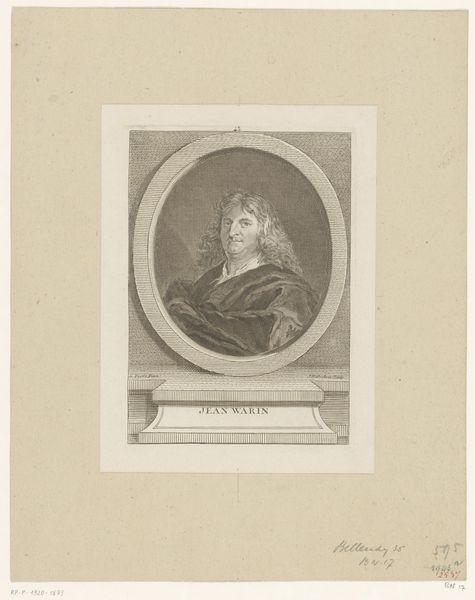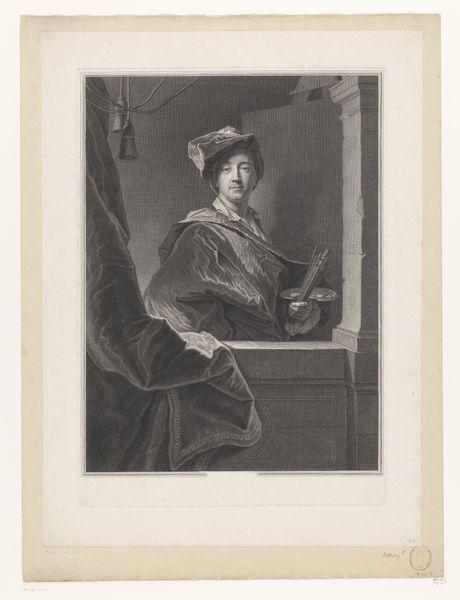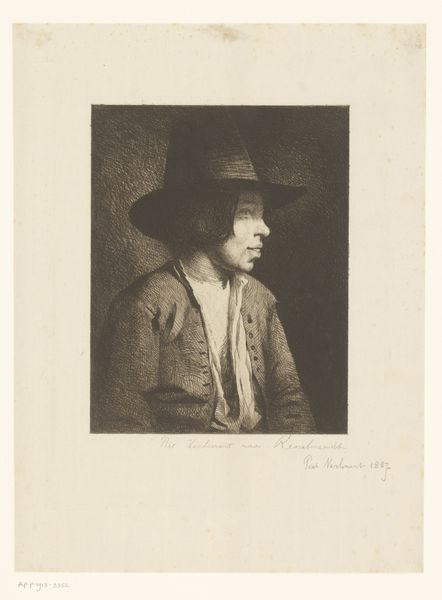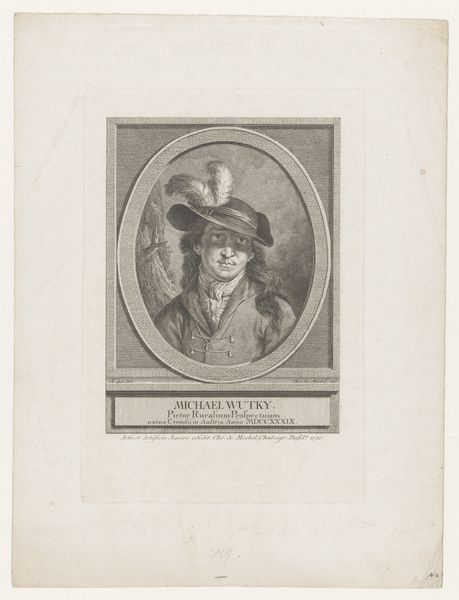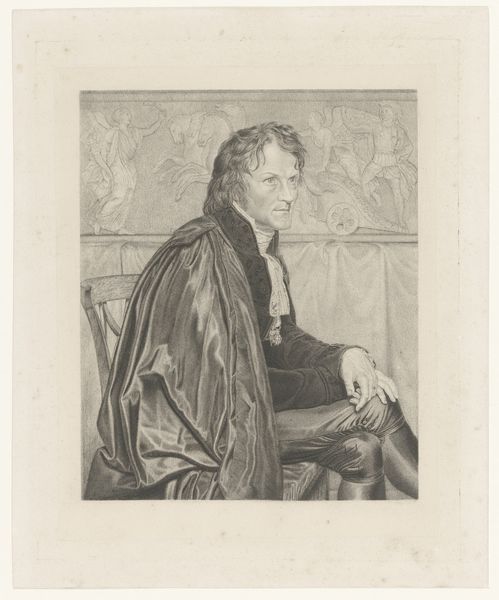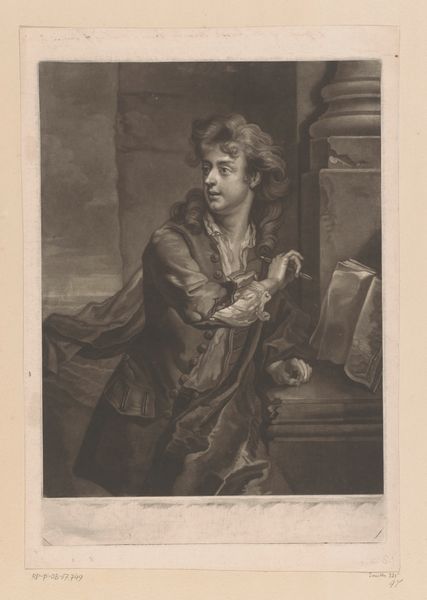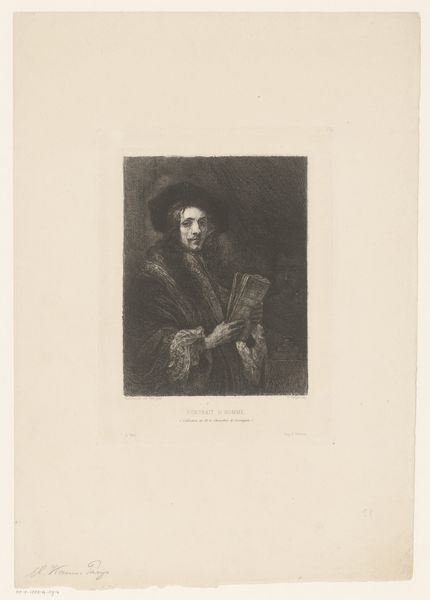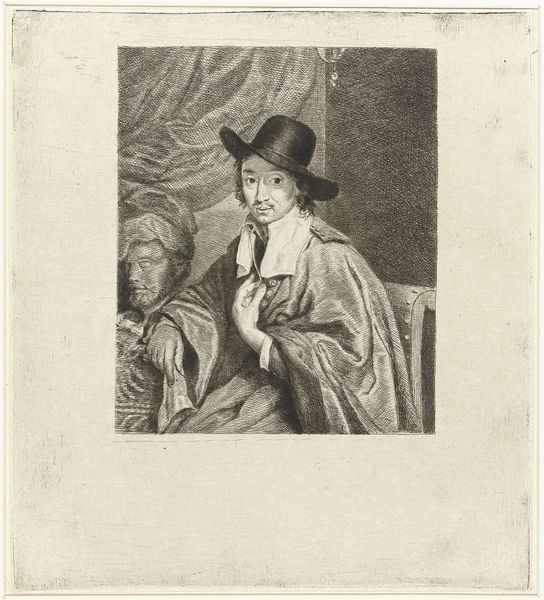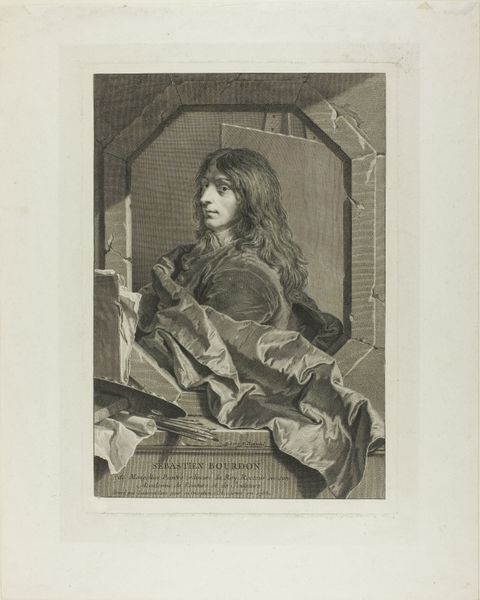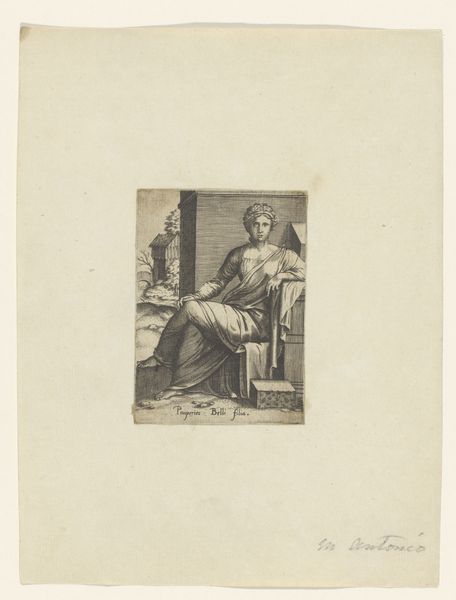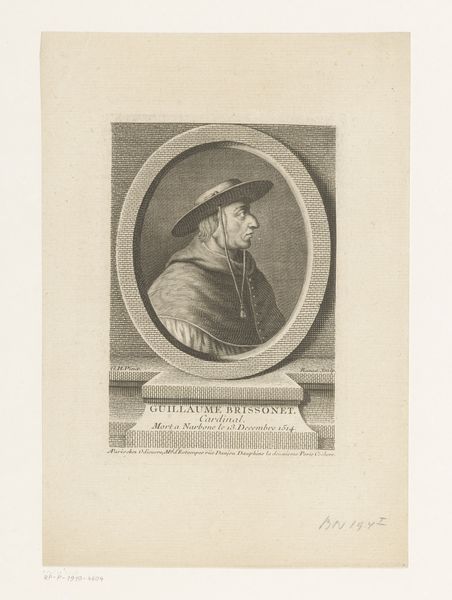
drawing, engraving
#
portrait
#
drawing
#
engraving
Dimensions: height 362 mm, width 260 mm
Copyright: Rijks Museum: Open Domain
Curator: Today, we are looking at an 18th-century engraving by Johann Friedrich Rosbach, "Portret van Christoph Freund," housed here at the Rijksmuseum. The subject is depicted holding a glass, within an oval frame set against what looks like draped fabric. Editor: My initial impression is that there's a strong sense of carefully constructed theater about this piece. Look at the way he's framed—it's almost like a stage set, the heavy drape lending a formal, slightly artificial feel to the scene. What do you make of it? Curator: Indeed. The framing speaks volumes. Placed within an ornate border, Freund is very self-consciously presented. We can interpret it through a lens of societal status, particularly considering Freund held the esteemed position of Painter to the Court of Anhalt-Köthen. Editor: Absolutely. And focusing on the process of production, consider how engraving, as a reproductive medium, would have amplified Freund’s image and, by extension, his patron’s prestige. The details—the textures rendered on the fur trim, the subtle gradation across his face—all suggest considerable skill and labor. Curator: Furthermore, let's explore the political symbolism. While subtle, portraiture often served to underscore the sitter’s connection to power and intellectual circles. The engraving as medium further emphasizes this access to knowledge, being distributed and studied amongst learned groups. Editor: And how do you feel about the rendering of his clothing? It’s interesting that Rosbach includes what looks like work-wear. Does the image play at downplaying the artist’s luxury with common presentation, and how might we interpret this? Curator: It raises intriguing questions about identity and representation, absolutely. It plays with societal expectations, allowing the artist to embody both craftsmanship and refined tastes. The tension lies in showcasing mastery of craft and position in a stratified world. Editor: Indeed. It seems Rosbach consciously wanted the viewer to contemplate Freund, his occupation, the labor that supported it, and how this intersects with artistic presentation. Curator: Reflecting on our conversation, I see Rosbach’s portrait as far more than a likeness, but rather a complex interplay between artistic identity, the materials that formed his trade, and prevailing social narratives. Editor: Yes, by tracing the materials, we gain a new appreciation of his status and can view the piece as an exploration of art's construction, physically and culturally.
Comments
No comments
Be the first to comment and join the conversation on the ultimate creative platform.
